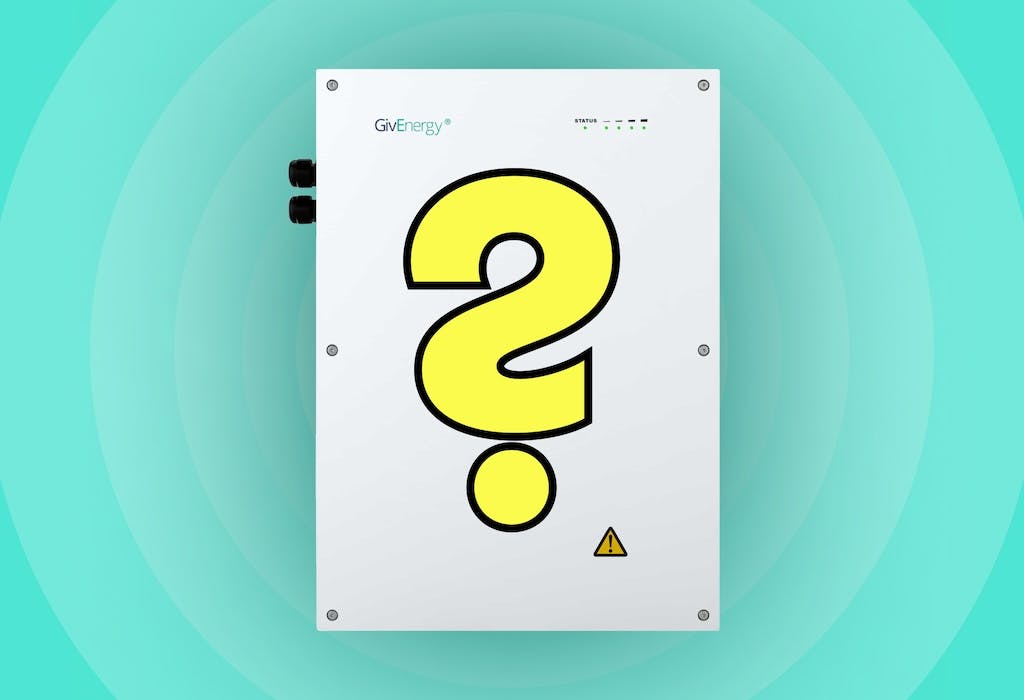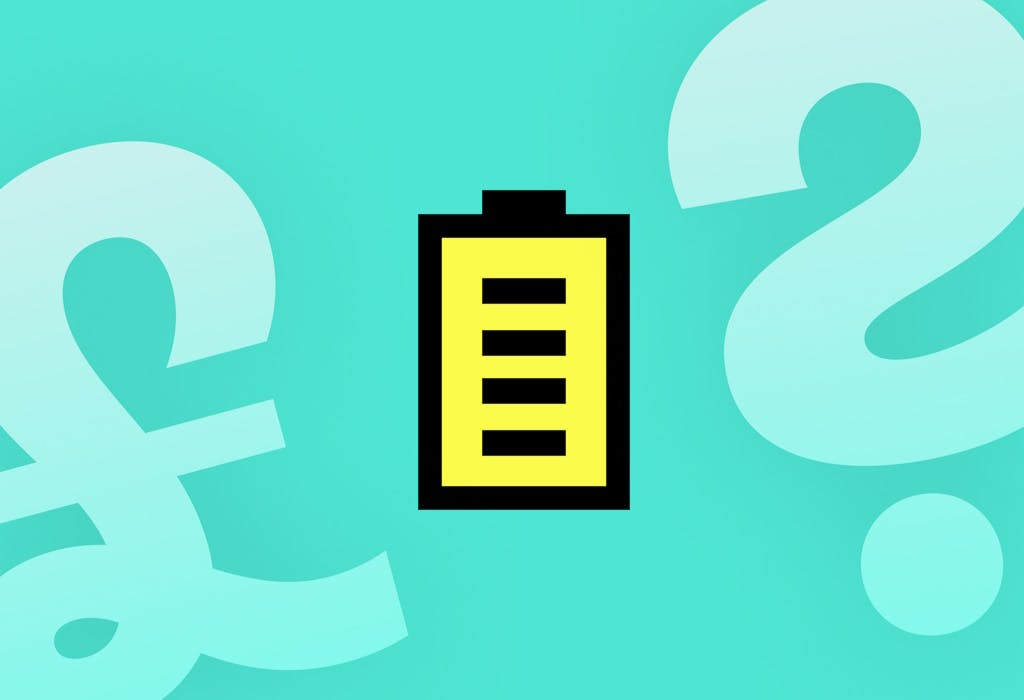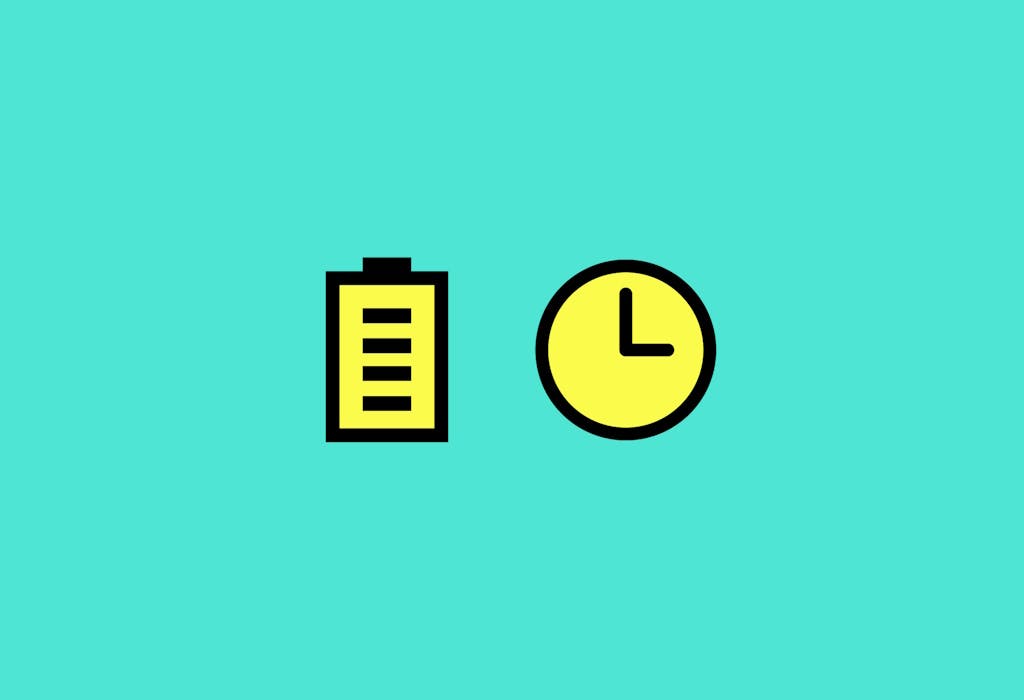- Solar advice hub
- Batteries
- 5 reasons to get a larger storage battery
5 reasons to get a larger storage battery
A larger battery can save you more money, soften the blow of price rises, and future-proof your home – among other benefits.


Why you can trust our content
We know that the solar industry is full of misinformation, but we only use reliable sources, including:
- Our experienced solar experts, installers and system designers
- Our own database of solar & battery system designs
- Authoritative bodies like MCS and the UK government




Calculate savings
What kind of home do you live in?
Calculate savings
What kind of home do you live in?
At a glance
It makes sense to choose a battery that serves your basic needs – but it’s better to get a bigger model, and take advantage of all the additional financial benefits on offer.
You’ll be able to store more of the electricity your solar panels produce, allowing you to drive down your energy bills even further.
Thanks to new solar tariffs, you can also use your battery as a profit-making machine that imports grid electricity when it’s cheap, and sells it back when the rate shoots up. The bigger the battery, the larger your profits.
A larger battery will also soften the blow of energy price rises, and prepare you for a future that’s likely to be more reliant on electricity – whether that includes an electric car, heat pump, air conditioning, or new additions to your household.
Here are all the reasons why you should consider getting a large battery.
If you’re interested in how much you could save with a solar & battery system, enter a few details below and we’ll generate an estimate.
Find out how much you can save
What kind of home do you live in?
1. The majority of the cost doesn’t change
A significant proportion of the total cost of your solar & battery system will go on labour and scaffolding.
These costs are fixed, no matter what size your battery is, so you may as well take advantage of the situation by getting a larger model.
It’s best to do this straight away, rather than adding to your storage capacity at some point in the future, as you’ll maximise your savings and avoid having to pay for labour all over again.
There also may be technical challenges associated with adding more battery capacity to a system at a later date, unless you get a battery with ‘stackable’ modules, which are specifically designed to have capacity added at a future date.
You can avoid these issues by getting a large amount of storage up front.
Plus, once it’s installed, you’ll be able to use even more of your solar electricity, which will lower your bills and cut your carbon footprint – all for a relatively small additional fee.
For the large majority of homes switching to solar, the lifetime savings from getting a larger battery will outweigh the initial expense.
2. Increase your self-consumption
Self-consumption is the percentage of solar electricity that goes from your panels to your household.
Whatever doesn’t go to your household gets sold to the grid – more on that in the next section.
Since all the electricity your solar panel system produces is free for you to use, it’s worth pushing your self-consumption up as far as you can, to help slash the amount of electricity you need to buy from the grid.
A battery is the best way to boost your self-consumption, since it can store some of the electricity your panels produce during the day, then use it to power your home after the sun sets.
Since most households experience peak usage between 5pm and 10pm – which includes a lot of hours without the sun, throughout the year – the ability to store electricity for later use will have a large impact on your self-consumption.
As you can see in the table below, which shows three households we’ve designed solar & battery systems for, getting a battery allows you to maximise the financial benefits of owning a solar panel system.
| Location | System size (kWp) | Electricity usage (kWh) | Energy bill reduction (5.2kWh battery) | Energy bill reduction (9.5kWh battery) |
|---|---|---|---|---|
| Greater Manchester | 5.78 | 5,449 | 82% | 88% |
| Derbyshire | 4.45 | 4,140 | 87% | 95% |
| East Sussex | 7.92 | 4,588 | 112% | 119% |
3. Make the most of smart export tariffs
A new type of solar export tariff has made buying a bigger battery even more financially beneficial.
These tariffs have adopted the peak and off-peak rates included in traditional time of use tariffs like Economy 7 and Economy 10, and applied this approach to the electricity you export as well.
This means you’ll be rewarded for sending electricity to the grid at peak times, as well as for using electricity at off-peak times.
Intelligent Octopus Flux (IOF) will even pay you the same rate for exported electricity as it charges you to import electricity – which means each kilowatt-hour you send to the grid will have a significant impact on your energy bills.
IOF is also smart, meaning Octopus will take control of your battery to maximise your profits.
It does this by engaging in electricity arbitrage – that is, it imports grid electricity when it’s cheaper for the company to buy from the grid, and exports to the grid at high-demand times, when it’s more profitable for the company and you.
This turns your battery into a money-making machine – and the bigger it is, the better your profits.

You’ll likely make increasing amounts of money from this kind of export tariff, as demand for electricity grows across the UK over the next decade.
Wholesale prices will rise even further during peak periods, which should lead suppliers to offer even more generous time of use tariffs that massively incentivise any household with a smart meter to shift their electricity usage away from peak times.
Octopus is a pioneer in this space, but other energy providers are set to follow, since it’s such a win-win for suppliers and customers. That’s wonderful news for solar homes – particularly if you have a large battery.
If you want to see the top Smart Export Guarantee rates, check our frequently updated guide.
4. Prepare for the future
Your household is likely to use more electricity in the future, as part of a nationwide shift to electrified heating, cooling, and driving – and a large battery will help with this.
The UK is moving towards net-zero emissions and energy independence, which means phasing out fossil fuels in favour of renewable electricity.
This will lead to a rapid increase in our electricity consumption, with the UK set to see a 50% rise in electricity demand by 2035, according to the independent Climate Change Committee (CCC).
UK electricity consumption forecast, 2020-2050
Electric cars and heat pumps are leading this technological and cultural revolution, as demonstrated by how popular they’ve become in the past few years.
In the space of four years, EVs have gone from making up 11% of new car sales to their current rate of 28%, as of June 2024.
For the UK to hit its carbon emissions goals, this figure must reach 100% by 2032 at the latest, according to the CCC, so this adoption rate will only pick up in the coming years.
Heat pump sales are surging too, having grown in each of the past six years before hitting new heights in 2023, when more than 60,000 were sold.
This number should keep climbing, as the government continues to offer grants like the £7,500 Boiler Upgrade Scheme so it can reach its target of 600,000 installations per year by 2028.
The downside of this shift is that electricity is expensive – but not for solar households.
In a world where electric cars and heat pumps are commonplace, and where air conditioning takes off as climate change intensifies, homes with solar panels will make massive savings, and those with large battery systems will save even more.
Plus, if you might increase the number of people in your household at some point – with a new child or elderly relative for instance – then a large battery can soften the financial blow that comes with higher electricity usage.
After all, a large battery can help you increase your self-consumption, meaning you get to maximise the amount of free solar electricity you use to power your home, while simultaneously keeping your grid electricity usage to a minimum.
An example
For example, if your home’s electricity usage jumps by 50% once everyone gets home from work or school, a small battery won’t be able to supply all of the extra electricity needed – meaning you’ll have to import the difference from the grid at the peak rate.
A big battery, on the other hand, can allow you to keep using solar electricity throughout the peak period.
And don’t wait until your usage increases to add more battery storage, as you’ll miss out on all the savings you’d make in the intervening years.
Whether you use it to sell more electricity to the grid, power large electric products like an EV, heat pump, or air conditioning system, or meet the needs of a big household, a larger battery is a great investment in your present and future.
In the table below, you can see the typical effect on your electricity usage and bills that an electric vehicle, heat pump, and air conditioning system would have – which you can largely avoid with a large battery.
| Electrical device | Annual electricity usage (kWh) | Annual cost* |
|---|---|---|
| Typical household usage | 3,400 | £875 |
| Heat pump | 3,200 | £823 |
| EV charger | 2,118 | £545 |
| Air conditioning | 2,500 | £643 |
| Total | 11,218 | £2,886 |
* Based on the July 2025 price cap
5. Get more out of the Demand Flexibility Service
Rising demand for electricity is going to increase pressure on the UK’s electricity grid, so it’s important to flatten the peaks in demand.
This need led to the creation of the Demand Flexibility Service (DFS), an initiative that pays households to reduce their electricity usage during high-demand periods – and the bigger your solar battery, the more benefit you’ll get from it.
The scheme was created by the National Grid Electricity System Operator, which manages the electricity distribution system in Great Britain – and is available to customers of dozens of electricity suppliers including Octopus, British Gas, and EDF.
It eases the pressure on the grid during peak times, which lowers operating costs and reduces the need for fossil fuels during these periods.
If you use a solar export tariff to get paid for the electricity you send to the grid, you’ll still receive this benefit during a DFS period – plus an extra DFS-funded bonus if you export more than you usually do.
A large battery allows you to export even more electricity at these times, which means higher savings on your energy bills.
In the winter of 2023/24, 2.6 million homes and businesses took part in the DFS, saving more than 3.7GWh – enough to power 1,370 households for a year – and it’s set to become a permanent, year-round feature of the energy market.
Homes have so far been paid around £3 per kWh, and will likely have more opportunities to profit, with industry experts expecting the service to be extended next year.
Taking part in the DFS with a battery can currently net you more than £100 per year, according to Loop Energy – a figure which will rise.
This trend of more DFS events will almost certainly continue as the country leans more heavily on electricity in the coming years, putting even more strain on the grid during peak times.
If you own a large solar battery, you can make full use of DFS and time of use tariffs to cut your electricity bills – and these savings should ramp up in the near future.
Next steps
You should seriously consider getting a large battery at the same time as you get the rest of your solar panel system installed.
You’ll typically raise your self-consumption, take full advantage of a smart export tariff, and future-proof your home – all of which will increase your savings.
Also, having it installed alongside your panels and inverter will likely save thousands of pounds on the cost of your battery.
If you’d like to know how much you could save with a solar & battery system, enter a few details below and we’ll generate an estimate.
Find out how much you can save
What kind of home do you live in?
Related articles

Written byJosh Jackman
Josh has written about the rapid rise of home solar for the past six years. His data-driven work has been featured in United Nations and World Health Organisation documents, as well as publications including The Eco Experts, Financial Times, The Independent, The Telegraph, The Times, and The Sun. Josh has also been interviewed as a renewables expert on BBC One’s Rip-Off Britain, ITV1’s Tonight show, and BBC Radio 4 and 5.



